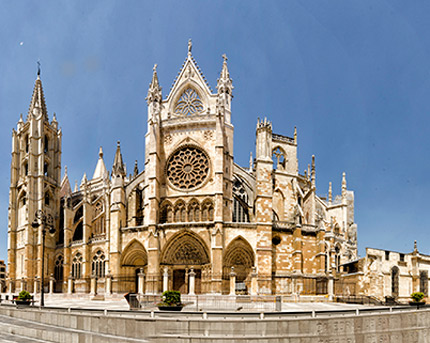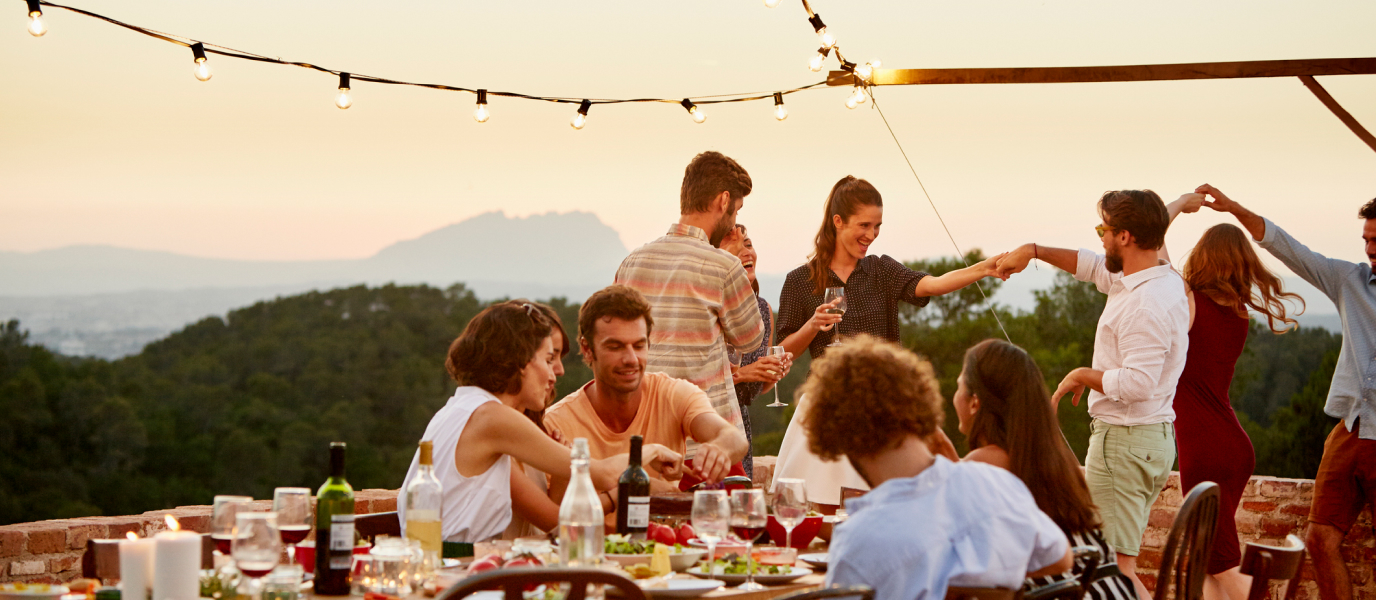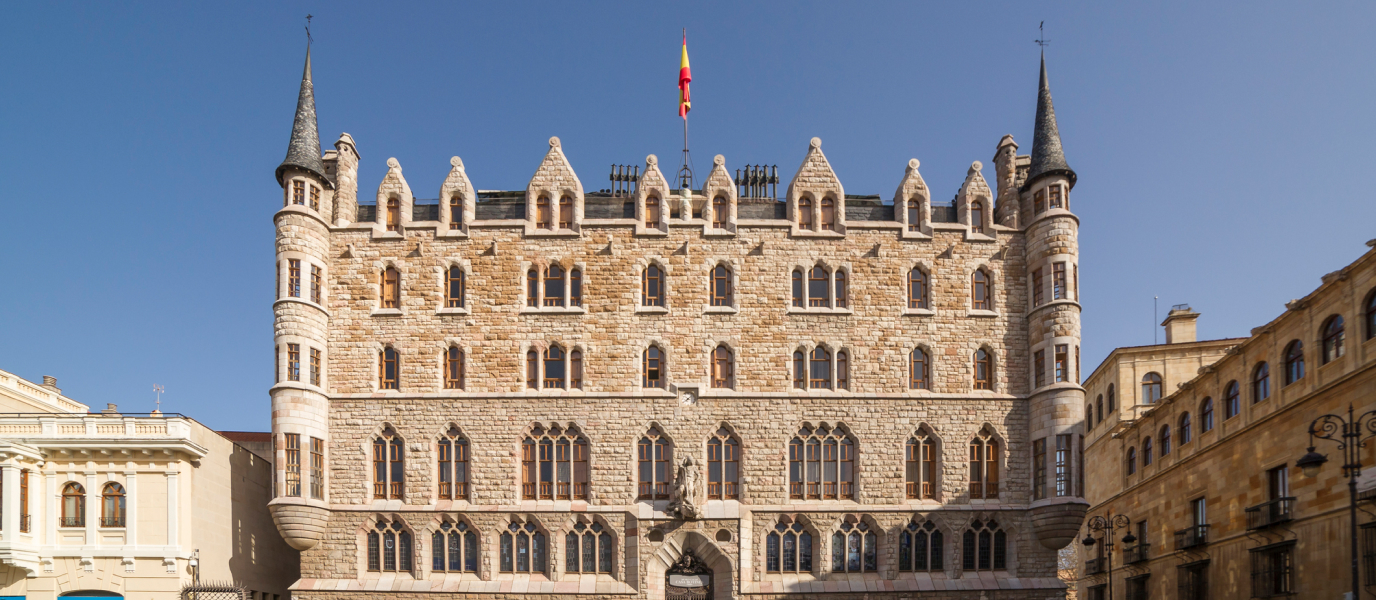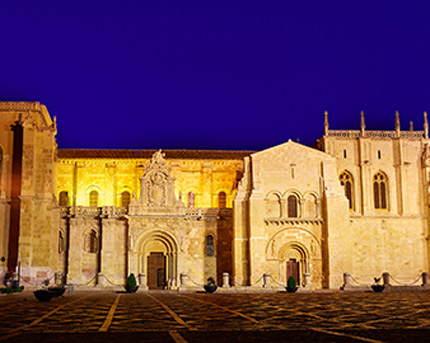León’s Catedral de la Virgen de Regla is what experts call an example of the dematerialisation of Gothic art. That is to say, a structure with very small walls and enormous window openings, where the finest medieval stained-glass windows in the world were inserted. It is impossible to stand before it and not be mesmerised by its majesty and size. Perhaps for this reason it is known as the Pulchra leonina, i.e. the Leonine beauty.
The cathedral is the most important Gothic cathedral, although it was not the first to be built – that accolade goes to Ávila cathedral. However, its similarities with French cathedrals make it unique.
History of León Cathedral
The land occupied by this impressive cathedral was once the site of Roman baths that King Ordoño II of León ordered to be transformed into a palace. However, in 916, after a great victory over the Arabs, the Christian knight ordered a cathedral to be built, the so-called first cathedral, in thanks to God for the outcome of the battle.
Following tradition, King Ordoño had himself buried inside the cathedral where, on his epitaph, the people of León thank him for his generosity.
A century later, however, its condition had severely declined and Ferdinand I decided not only not to restore it but to move the remains of Saint Isidore.
The king and his sister, Urraca of Zamora, decided to expand the cathedral and build a slender second Gothic cathedral, which was consecrated on 10 November 1073.
This would not be the final building, however; almost 200 years later, Alfonso X commissioned the master Enrique, a native of France, to build the third cathedral in the Gothic style. The architect was inspired by Riems Cathedral, with which León’s has many similarities, making the structure almost unique on this side of the Pyrenees.
Due to the fact it is built on top of the Roman ruins of the baths, the foundations are not as robust as required for this great building and the cathedral has undergone several renovations over recent decades. Nevertheless, it is thought to surpass even French cathedrals in terms of the demineralisation technique, with small walls full of enormous window openings in which its famous stained-glass windows were inserted.
The architecture of León Cathedral
The exterior
The cathedral’s main door is reminiscent of the entrance to the French Gothic Reims Cathedral, with its triple pointed portico. Above the entrance is its famous rose window with thirteenth-century stained glass, flanked by two towers with different heights and designs, a feature that was typical of Gothic art, an art form that adapted to the circumstances of each moment in time. It is interesting to see how they are attached to the sides of the main section of the cathedral, emerging from them and exposing the unusual feature that are the flying buttresses supporting the structure.
The main doorway, known as the Last Judgement, features the White Virgin and a Saint James, who can be recognised by the shell he carries, although it is very worn, as legend has it, from being rubbed by pilgrims.
On the north façade, next to the rose window, is what is known as the queen’s chair, a small tower that was built to support the weight of the flying buttresses and keep the cathedral upright.
On the south façade, some of the cathedral’s doorways are particularly notable, especially the Door of Death, so called because of the figure of a skeleton with wings that is located inside one of the corbels.
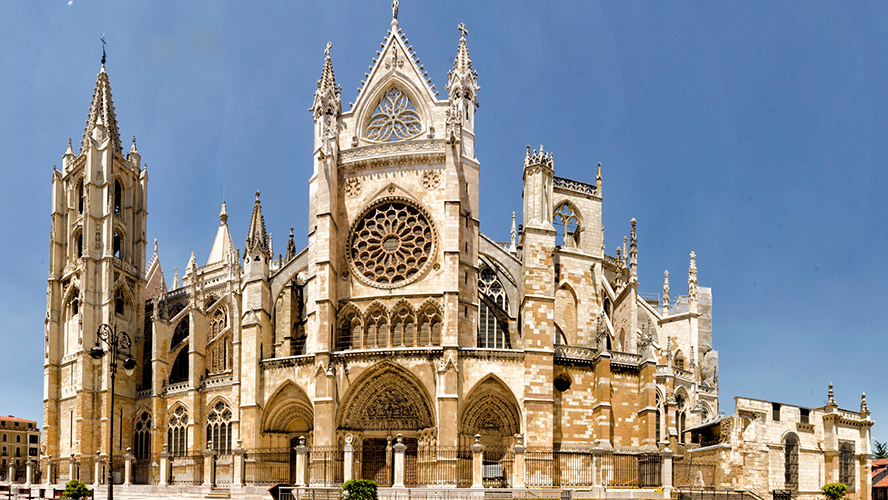
The inside
Two of the main highlights of the impressive three-part interior of León Cathedral are its chapels and its impressive stained-glass windows and rose windows, most of the originals of which have been preserved.
The stained-glass windows have strong symbolic meaning both in terms of their arrangement and the interplay of coloured lights that they form, and paying them a visit as part of a special tour is highly recommended.
With a bit of patience you will be able to find two of the most unusual stained-glass windows: that of La Cacería, or the hunt, which is said to have been brought from the palace of Alfonso X, the king who built the cathedral, and that of Simon Magus, a profane teacher of whom many legends have been told.
Out of all the chapels, several are well worth a visit, including the chapel of Santa Lucía and that of San Juan de Regla with its Churriqueresque altarpiece. The latter is known as the ‘parish of the cathedral’ and the inscriptions on the sides show that it was already open in 1274.
A tomb is housed within the temple that contained the ashes of Saint Alvito, who died in Seville on his way to collect the relics of Saint Justa and Rufina. What arrived with the body of the bishop, however, were the remains of Saint Isidore of Seville, which are kept in León Cathedral.
Visiting the Cathedral. Useful information
León Cathedral is hardly lit up by artificial light; its impressive stained-glass windows are enough. That is why you have to know the right time of day, and even of the year, to visit in order to bring out the full splendour of both the space and the monuments and paintings that adorn it.
In fact, Gothic masters already knew about this trick of light and shadow and took advantage of the orientation of the walls to highlight even more the iconography of the stained-glass windows and their celestial message as Paradise on Earth.
Thus, when the sun rises, it is the rose window showing the Tree of Jesse that is illuminated to finish up, at dusk, giving all the prominence to the Virgin and Child and the Twelve Apostles. The genealogy of Christ in its purest form. To the north are the characters of the Old Testament, who did not known Jesus, depicted with bluer tones. To the south, those of the New Testament appear, glowing in warmer hues.
During the tour you can also see the Cloister and the Cathedral Museum, where the treasures of a cathedral that has been key to the Camino de Santiago are safeguarded. Before continuing, however, be sure to stop at one of the most incredible places in León: the doorway of the Virgen del Dado.
Legend has it that, in a game, a soldier was prepared to even gamble his mother away and that, realising what he had done, his spiritual mother, Mary, intervened for him. This work of art still retains its sixteenth-century polychromy.
The legend of the mole
The cathedral is built on the site of Roman baths that left a great deal of damp and little space for the pillars, meaning that the building begun to have settling problems as early as the fifteenth century. It is therefore not surprising that the people of the time sought a superhuman explanation for their problems, finding a culprit for the subsidence in an evil mole.
Legend has it that the workers blamed this devilish mole for undoing at night what they had built during the day and, that one day, fed up with it all, they caught him in a trap.
Since then, its hide has hung from the door of San Juan, like a keel, hanging from the top as proof of the workers’ bravery.
We now know, however, that the object placed on top of the door of San Juan is not a rodent but the shell of a leatherback sea turtle, as was verified in 1990.
Not much is known about how the turtle got to the top of the cathedral, but the most plausible theory is that it was the offering of a knight or a member of the local bourgeois with a great deal of power.
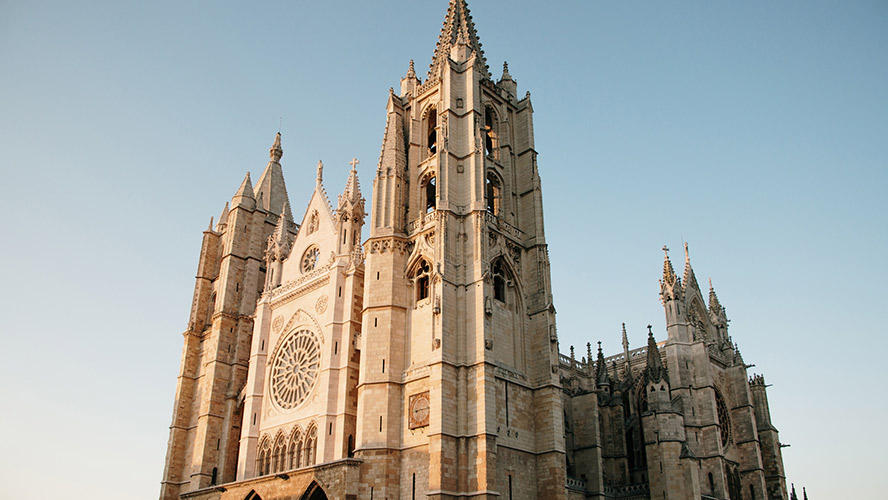
Where to stay in León
León is a city with a wide range of places to spend the night, but the old town is still the most popular among those wanting to immerse themselves in the magic of its narrow streets. The four-star Barceló León Conde Luna is a perfect option due to its location, just 300 metres from the Palacio de los Guzmanes and a five-minute walk from the cathedral.
It is also home to two of León’s most emblematic restaurants, Nimú Azotea, situated on the tenth floor of the hotel, and Casa Mando.
Just as close is the Occidental León Alfonso V, which also has four stars, located less than 200 metres from the palace. The building’s architecture is striking thanks to the impressive interior dome that rises to the eighth floor of the hotel complex from the reception area.





























































